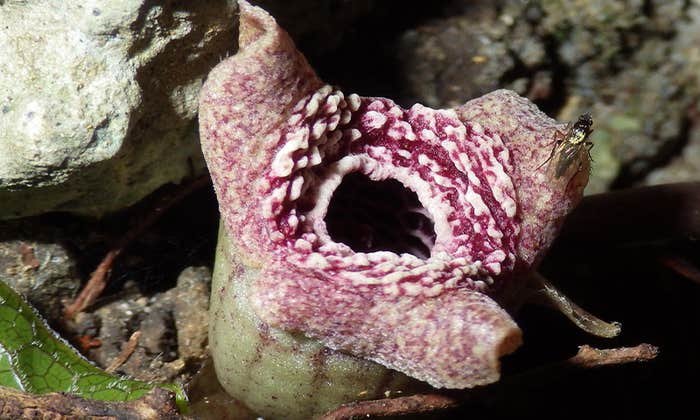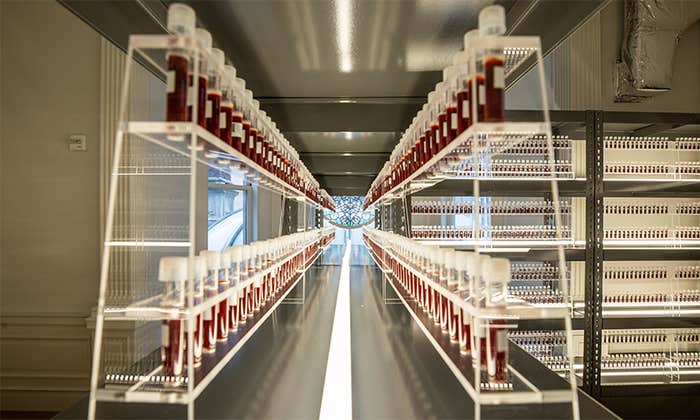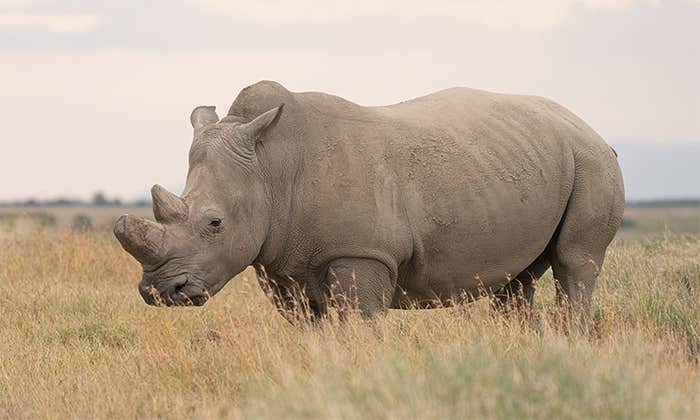The boy was only a month old but had developed the amount of health problems that other people don’t acquire in a lifetime. He was constantly suffering from bacterial infections, battling unexplained inflammation, not gaining weight, and—scariest of all—having bloody diarrhea, a puzzling symptom that made some doctors think he had a pediatric version of an irritable bowel disease.
Artemio Miguel Jongco, an allergy and immunology specialist who was finishing medical school, saw the boy on the first day of his first rotational practice in 2008. The symptoms sounded vaguely familiar from his textbook reading: a rare genetic disorder called chronic granulomatous disease, or CGD, in which the immune system can’t fight infections properly. There were supportive treatments for CGD, but ones that worked for some patients didn’t necessarily work for others.
Why Mother Nature put such an important gene on the X chromosome we likely won’t ever know.
While most genetic disorders are incurable, doctors do their best to manage them. Some medications help while others prove futile—a phenomenon that stems from patients’ genetic variations and the difficulty predicting which genes are involved. If clinicians knew more about the genes’ interplay, they could devise personalized therapies, matching them to patients’ specific genetic makeups.
Until recently, clinicians didn’t have good tools for personalized genetic analysis. But that’s changing, thanks to quantitative biology. The discipline merges mathematical, statistical, and computational methods to study living organisms, explains Jesse Gillis, a quantitative biologist at Cold Spring Harbor Laboratory, who now collaborates with Jongco on CGD research. Quantitative biologists develop algorithms that chew through big datasets and try to make sense of them. In case of rare genetic disorders, that means analyzing loads of data from multiple patients to understand how their genes work in tandem with each other. Researchers like Gillis and his team hope to give clinicians a peek at what their patients’ genes are doing, helping devise personalized therapies.
For Jongco, now a pediatric allergy and immunology specialist at Northwell Health, a healthcare system in New York, CGD represented such a conundrum that it became his personal quest to understand all of its underpinnings to diagnose and treat in a personal way. Scientists had linked CGD to the malfunctioning neutrophils—the type of white blood cells that normally wrap around pathogens, as if shutting them from the body in a cellular prison or a death chamber of sorts. Then the neutrophils do what scientists call an oxidative burst—inside that death chamber, they release active molecules called free radicals that destroy the bugs. In the process, neutrophils die too, but the body makes more.
In people with CGD, the neutrophils don’t function right. They either don’t shroud the bugs fully or don’t zap them correctly, but the pathogens persist while the free radicals damage the body’s own tissues. “It’s like a self-contained package that Mother Nature designed to destroy pathogens,” says Jongco. “But for whatever reason that self-contained package isn’t fully working right.”
CGD symptoms can be almost oxymoronic. Some patients have immunodeficiency because of a weakened immune system, while at the same time battling autoimmune conditions, in which an overzealous immune system attacks its own body. The former needs a boost, the latter a dampening. How does a doctor treat both?
Typically, doctors put patients on antibacterial and anti-fungal meds, plus an interferon-gamma drug, which stimulates the bug-zapping—but only in patients who have some oxidative burst capacity (some don’t have any.) Some patients may need anti-inflammatory drugs. For others a risky stem-cell transplant may be a last resort. Knowing which treatment options and drug combos would work best lies somewhere in the complex interplay of patients’ genes.
Studying disorders like CGD is difficult because they are rare; there aren’t many patients. Studying them in mice—in wet labs, as scientists call them—takes a long time. Also, what works in mice doesn’t always work in humans.
There has been a growing understanding that gene function is often context-dependent, with a large part of that context supplied by the activities of other genes.
In recent years, DNA-sequencing technologies have matured to the point where a smart algorithm can parse genetic data from multiple patients and their families—and find tale-telling trends much faster than experiments on rodents can. “I realized we can only do so much at the lab bench; we can’t be masters of everything,” Jongco says. “I don’t enjoy writing code, so I needed a computational data scientist partner to crunch big data, somebody whose love is the computational side but who is willing to learn about fundamental biology.”
In 2017, Jongco reached out to Gillis, whose niche was exactly what Jongco was looking for—a way to parse genetic data from different patients and find common patterns and trends. The CGD endeavor was in tune with Gillis’s other quantitative biology projects. Some of his algorithms were studying plant biology, zeroing in on genes that can help plants grow better or be more resilient. But Jongco’s idea of sifting through the patients’ genes in hopes of finding some keys to personalized care was an inspiring undertaking. “It offered a real opportunity to help real people,” Gillis says.
Gillis and Jongco teamed up together for a cyber hunt for genes. They worked up a protocol. As soon as a new patient with granulomatous symptoms arrived at Jongco’s office, their blood samples would be taken, immune cells extracted, and sent to CSHL. Sometimes Jongco would even hand-deliver them—CSHL is only 15 minutes away and neutrophils don’t live long outside the body, so timing was of the essence. Soon other institutions joined the effort, including the National Institutes of Health, and more recently, the University of Pittsburgh. Gillis’s team would put the cells through the sequencer and compare the data to that of previously sequenced patients, trying to find some common patterns.
There are some genetic facts about the disease that scientists already know; for example, it comes in two different versions. One version is caused by a mutation in several genes with the cryptic names CYBA, NCF1, NCF2, and NCF4, and is called CGD. The other is triggered by a gene with an equally cryptic name CYBB, which resides on the X chromosome, hence the name XCGD. This version affects primarily boys because they have an X and a Y chromosome, while girls have two Xs and have smaller chances of developing the disease. Yet girls can be carriers, and they do suffer from it too, but in a milder form of rashes and inflammations, which often worsen with age. The boys get the more severe, potentially life-threatening XCGD, which they inherit from their moms. “Why Mother Nature put such an important gene on the X chromosome we likely won’t ever know,” Jongco says.
The disease variability led scientists to think that while the CYBB gene might be the XCGD’s main culprit, it also has accomplices—other genes that play a role. Geneticists have been gradually realizing that genes often tend to often work in tandem with each other, so finding such tandems could provide valuable insights. “Over the past few years, there has been a growing understanding that gene function is often context-dependent, with a large part of that context supplied by the activities of other genes,” Gillis says. His lab focuses on finding these shared patterns and elucidating how they alter the functioning of the cells.
Gillis’ algorithms can analyze the cell’s RNA molecules, which play an essential role in reading information from genes and assembling proteins from these instructions; in this case, proteins vital for neutrophils’ germ killing. Glitches in RNA functioning can result in improperly assembled proteins, affecting neutrophils’ ability to zap the germs with their oxidative burst. Exactly at what point in this assembly line such glitches happen, makes a difference, too. If proteins come out nearly complete, the neutrophils might be able to do their job semi-decently, resulting in milder symptoms. Otherwise, they might emerge severely deficient and the disease will be harsher. Even where on the gene the mutation falls is important. If one’s mutation falls on the less critical portion of the gene, the disease will be less severe, so these patients may need fewer medications or smaller doses.
Understanding how such fine details play out in the disease variability can take wet lab scientists years of work, Gillis says. They would have to make mice with different gene mutations and see how they affect the severity of the disease and what treatments they respond to. And if they wanted to know which “tandem” genes were contributing, they’d have to blindly try a myriad of combinations. In the computational biology world, an algorithm can parse that data in days. “We should daily be asking questions that successively build on each other,” Gillis says about his lab. “Unlike a wet lab where they ask one question every six months.”
So far, the cyber gene hunters have managed to sequence only about 10 patients, along with their mothers and sisters—partially because the disease is rare and partially because the pandemic slowed everything down. That’s not yet enough to draw any definitive conclusions. But as more patients arrive, the data pool will grow and the algorithms should be able to tease out some tale-telling patterns, which would allow Jongco to treat his patients with better precision. “If Jesse can come up with a genetic profile of which people are going to be more likely to get autoimmunity, we may not need to treat them for that,” Jongco says. Quantitative biology can also help Jongco design a treatment that would revive patients’ germ-zapping abilities. “We hope that our approach can help identify such genetic profiles,” Gillis says. “And that could really help improve patients’ quality of life.”
Lela Nargi is a veteran journalist covering science, sustainability, and food policy and agriculture, for outlets such as the Guardian, Washington Post, Hakai, The Counter, JSTOR Daily, and Ensia. Find her at lelanargi.com.
Lead image: ymgerman / Shutterstock
This article was originally published on our Biology + Beyond channel in June 2021.


























